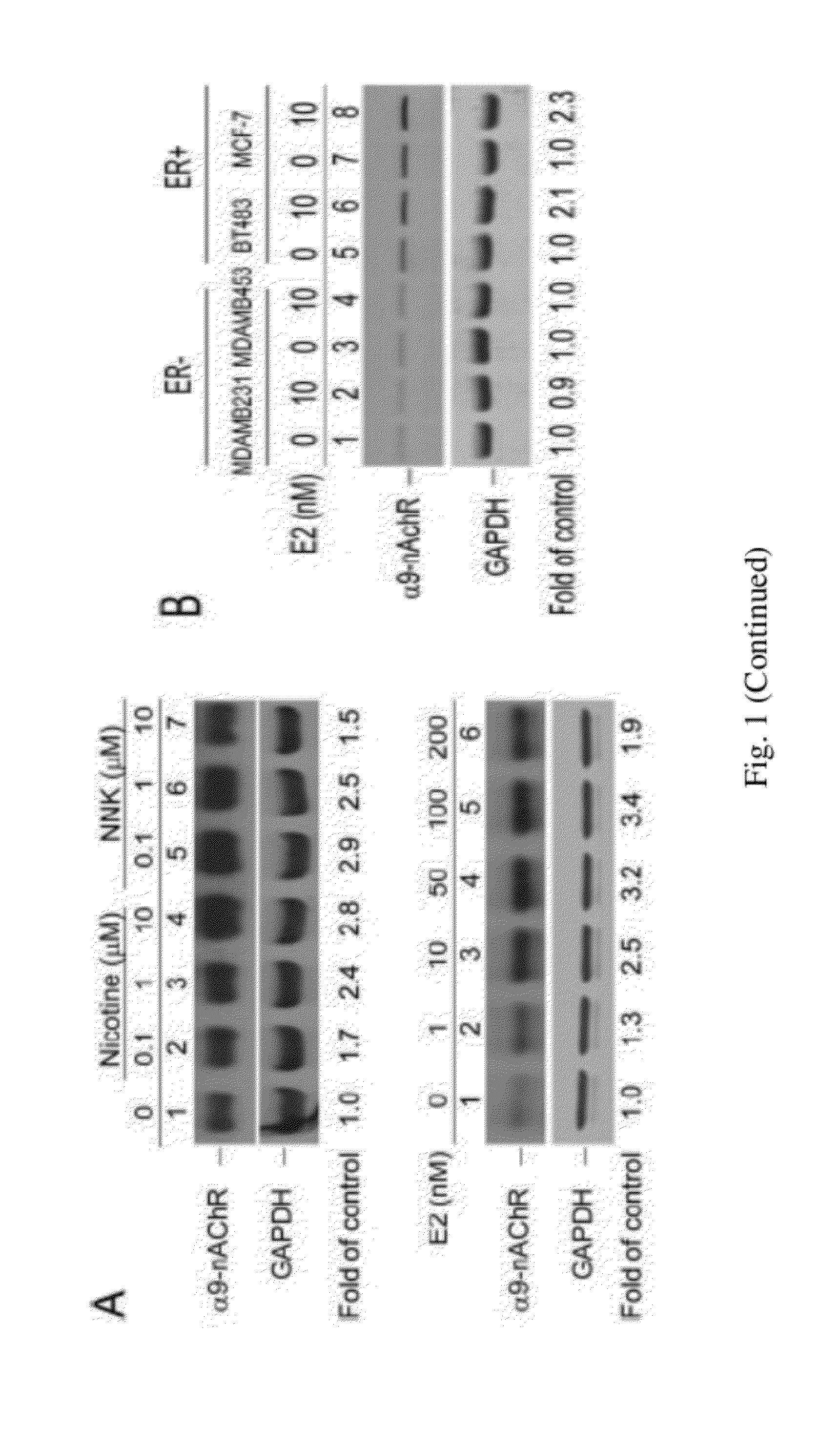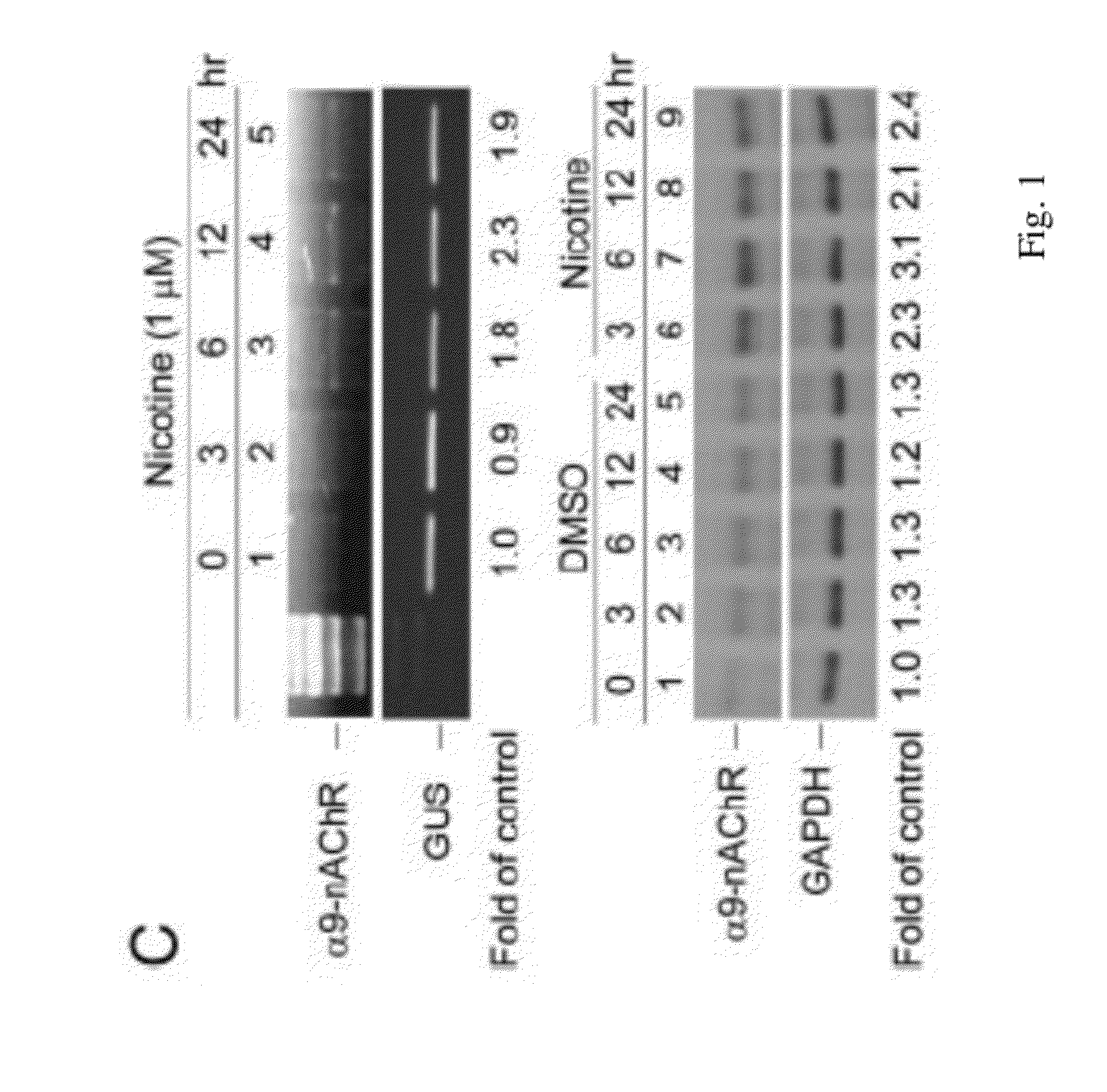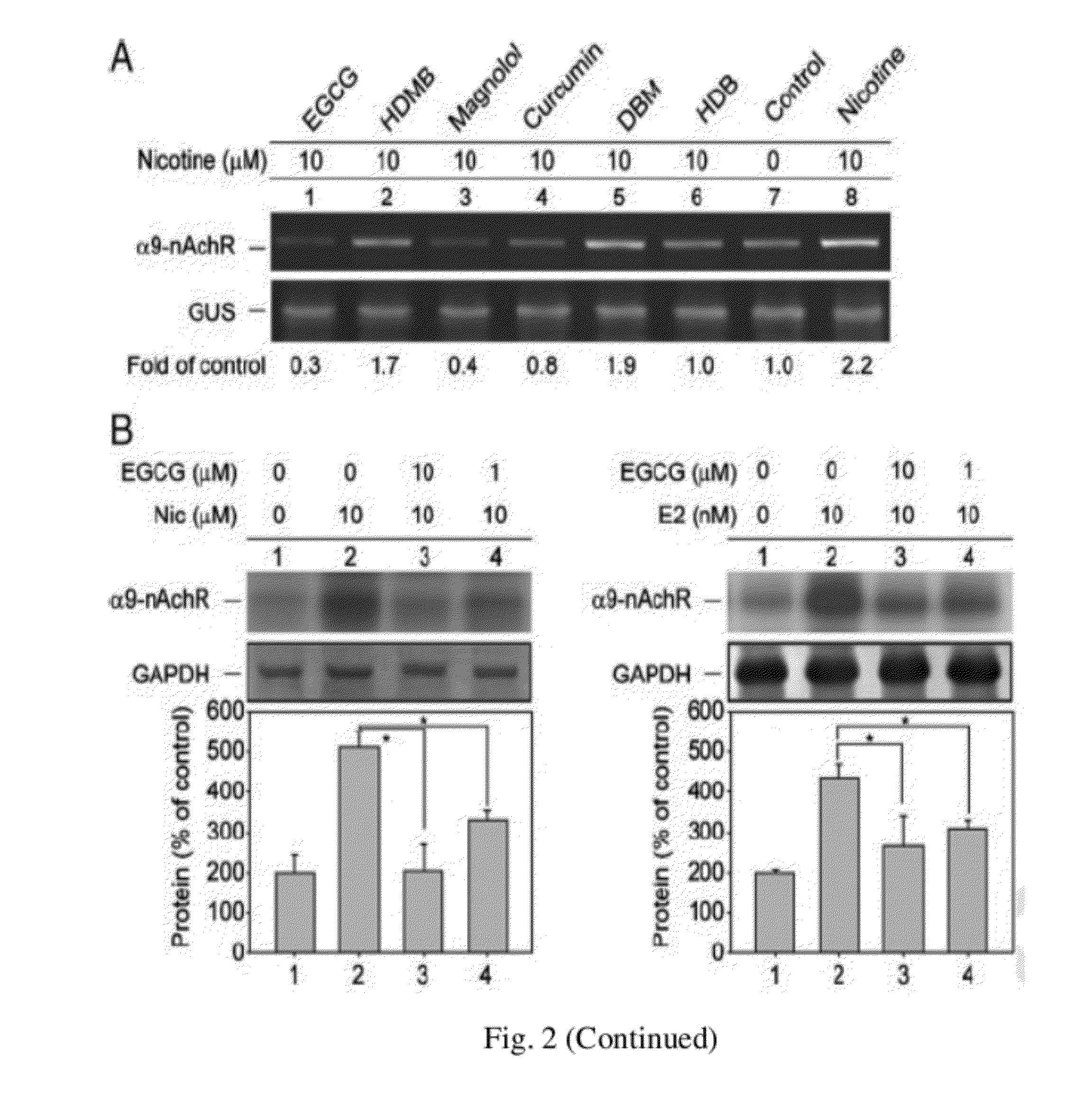Tea polyphenols products for ceasing smoking and treating and/or preventing nicotine or nicotine-derived compounds or estrogen induced breast cancer
a technology of tea polyphenols and estrogen, which is applied in the direction of heterocyclic compound active ingredients, biocides, drug compositions, etc., can solve the problems that no prior art discloses or suggests the relationship of tea polyphenols with nicotine or nicotine-derived compounds or estrogen-induced breast cancer, and achieve the effects of preventing smoking addition, preventing smoking addition, and preventing smoking
- Summary
- Abstract
- Description
- Claims
- Application Information
AI Technical Summary
Benefits of technology
Problems solved by technology
Method used
Image
Examples
example 1
Nic- and E2-Induced nAChR Expression in a Human Breast Cancer Cell Line
[0064]Smoking and hormones are two important etiological factors involved in breast cancer formation (Daniell, H. W., breast cancer, and smoking. N. Engl. J. Med. 1980, 302, 1478). A recent study revealed that the expression of the α9-nAChR subunit in MCF7 cells is largely responsible for the observed Nic-induced proliferation (Chen, C. S., Lee, C. H., Hsieh, C. D., Ho, C. T. et al., Breast Cancer Res. Treat. 2010). To test whether nicotinic-induced cell proliferation signaling was also influenced by crosstalk from hormones (such as E2) through the induction of α9-nAChR, MCF-7 cells were treated with different doses of Nic, its metabolically active carcinogenic compound NNK, and E2 (FIG. 1A). The results demonstrate that the α9-nAChR protein level was significantly induced in MCF-7 cells by either smoking components (NNK, Nic) or the hormone (E2) in a dose-dependent manner (FIG. 1A). To test whether the α9-nAChR ...
example 2
Nic- and E2-Induced a9-nAChR Expression was Blocked by the Tea Polyphenol (EGCG) in MCF-7 Cells
[0065]Several natural polyphenolic compounds derived from edible plants were evaluated. All these compounds have been reported in previous articles to have antiproliferative or apoptosis-inducing activities in human cancer cells (Pan, M. H., Huang, M. C., Wang, Y. J., Lin, J. K, Lin, C. H., J. Agric. Food Chem. 2003, 51, 3977-3984; Aggarwal, B. B., Sethi, G., Ahn, K. S., Sandur, S. K et al., Ann. NY Acad. Sci. 2006, 1091, 151-169). It was found that α9-nAChR mRNA and protein were downregulated by EGCG (1 μM) in Nic-treated cells (FIGS. 2A and B). It was then tested whether E2-induced overexpression of α9-nAChR could also be blocked by EGCG. MCF-7 cells were treated with E2 in the presence or absence of EGCG (FIG. 2B). The results demonstrate that αa9-nAChR protein expression, which was induced by either Nic or E2, was significantly inhibited by EGCG in MCF-7 cells (FIG. 2B). In order to ev...
example 3
EGCG Pretreatment Attenuated Nic-and E2-Induced a9-nAChR Protein Expression through Inhibition of AKT Signals in MCF-7 Cells
[0066]A previous study demonstrated that AKT is activated through phosphorylation of serine (Ser473) or threonine (Thr308) by different upstream stimulatory factors involved in breast cancer cell proliferation (Liu, Z., Yu, X., Shaikh, Z. A., Toxicol. Appl. Pharmacol. 2008, 228, 286-294). To test whether PI3 kinase (PI3K)-mediated signals are involved in Nic- and E2-induced α9-nAChR activation, MCF-7 cells were pretreated with a PI3K / AKT inhibitor (LY294002, 25 μM) or EGCG (10 μM) for 24 h and were subsequently treated with Nic (10 μM) or E2 (10 nM) for an additional 24 h. Immunoblotting analysis was performed, and the results show that Nic and E2 treatment significantly increased the levels of p-AKT (Ser473) (FIGS. 4A and B, lane 2). However, our study shows that Nic- and E2-induced upregulation of α9-nAChR is not significantly inhibited by LY294002 through in...
PUM
| Property | Measurement | Unit |
|---|---|---|
| concentrations | aaaaa | aaaaa |
| concentrations | aaaaa | aaaaa |
| concentrations | aaaaa | aaaaa |
Abstract
Description
Claims
Application Information
 Login to View More
Login to View More - R&D
- Intellectual Property
- Life Sciences
- Materials
- Tech Scout
- Unparalleled Data Quality
- Higher Quality Content
- 60% Fewer Hallucinations
Browse by: Latest US Patents, China's latest patents, Technical Efficacy Thesaurus, Application Domain, Technology Topic, Popular Technical Reports.
© 2025 PatSnap. All rights reserved.Legal|Privacy policy|Modern Slavery Act Transparency Statement|Sitemap|About US| Contact US: help@patsnap.com



